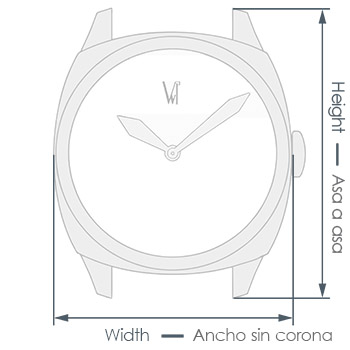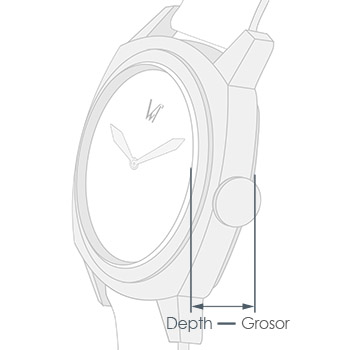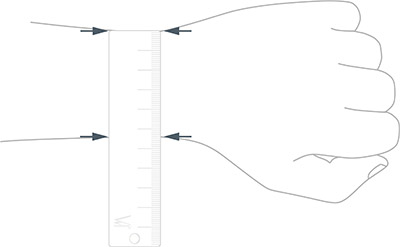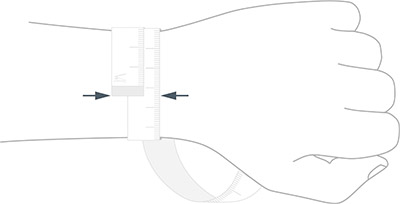Some tips about measures and proportions.
In vintage watch place we measures the watches in this way


About the size of the watches
The measures of watches have been changing throughout history, with ups and downs, from very small to too large and back again to the origins.
It can be evident that a small wrist asks for a small watch and vice versa, but it does not have to be that way, everyone has their own style and you can also change sizes depending on the occasion.
Dress watches have always been smaller than sports watches, sometimes too small to be a Man's watch, or impossible to read for a normal person in the case of women's cocktail watches from the 40's - 60's.
The diameters in men's watches are usually between 36 mm and 43 mm, of course there are larger and smaller ones, especially if we talk about vintage watches, which, speaking of the round-shaped classics, used to be between the 32 mm and the 38 mm, 40 mm as much, although these measurements are maintained today for the most classic watches.
A small guide regarding vintage watches:
Less than 33 mm - Small dress or boys size.
From 33 mm to 36 mm - Medium Men.
From 36 mm to 40 mm - Large Men.
More than 40 mm - Very large, very rare.
How to measure your wrist
- Measuring your wrist wideness
Measure your wrist with a ruler, from above, from one side to the other, to know how a watch will looks like according to the size of the case.
In each of the descriptions of our watches, you will find on the top of it, a drawing of a hand with a watch, which will take you to an image that, in an estimated way, will visually show you how will the watch looks like according to the wrist size you indicate.

- Measuring your wrist perimeter
Measure your wrist with a measuring tape (sewing tape) in its total circumference, wrapping it with the tape, to know what size of bracelet or wristband you need, this is very important in vintage watchmaking, since the bracelets of yesteryear were smaller and they had much less margin than today's.

